Dover Castle: Gateway and Key to England
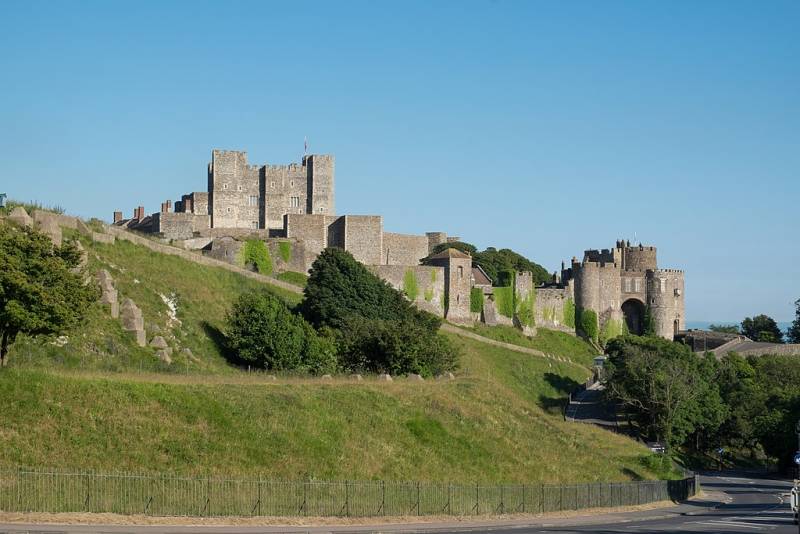
Dover Castle, seen from the north
William of Poitier, Norman historian, on the capture of Dover by William the Conqueror.
History and castles. It is not for nothing that Dover Castle is called the "Gateway to England", although, on the other hand, it is also the key to it, and in the truest sense of the word. Everyone who crossed the Pas de Calais, or simply the Canal - that is, the narrowest place between England and France, simply could not help but fall into the field of view of his garrison.
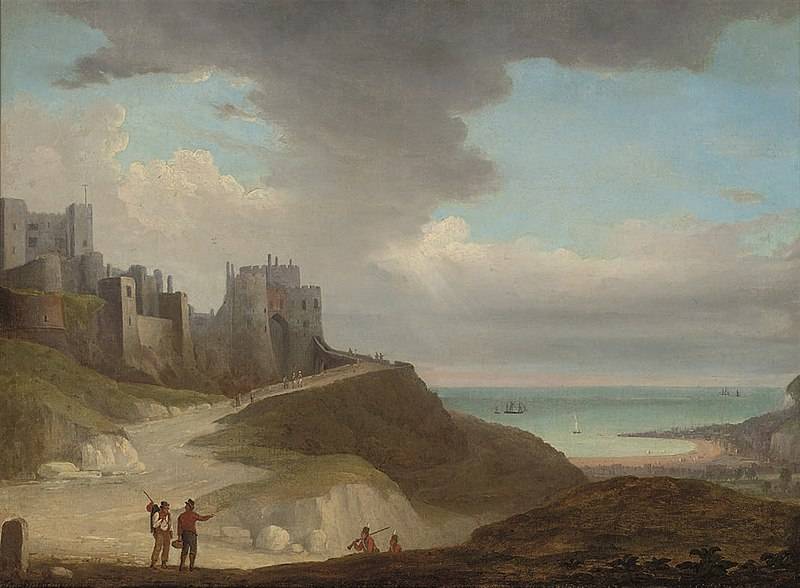
Dover Castle from the Napoleonic Wars. Watercolor by Thomas Whitcomb
Before the Romans
It is clear that this castle on the shore of the strait was not built for the sake of beauty, but precisely in order to find out in advance about the approach of both “invited” and uninvited guests and have time to gather strength to repulse the latter. Therefore, fortifications in these places began to be erected long before the arrival of the Romans here in the XNUMXst century BC. True, who erected them is unknown. Archaeologists have not yet found out any details on this matter. But ... the fact, nevertheless, remains a fact: “a holy place is never empty”, here are the fortifications here, as well as the lighthouse, and they appeared here a very long time ago. According to the most conservative estimates, Dover Castle has about two thousand years. And today it is one of the oldest and largest defensive fortifications in Great Britain.
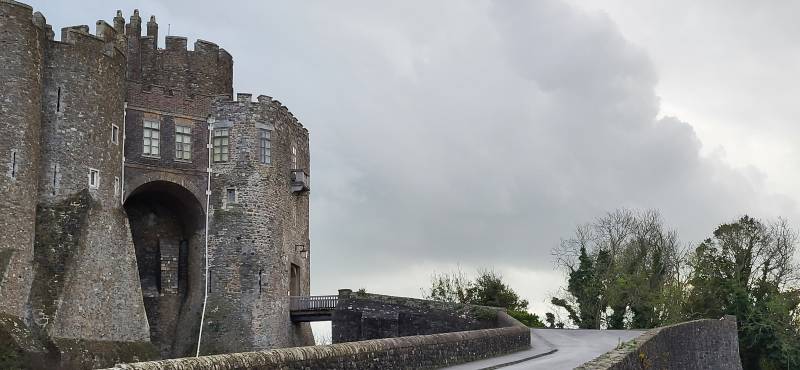
Well, this is how the place depicted in the watercolor looks today
Guillaume Bastard... deceiver
Having landed on the island in the 1600st century, the Romans not only built a fortress and a port here, but also took care of building two lighthouses, one of which is still intact. But when the Romans left England more than XNUMX years ago, the city of Dover remained in its place, and with it the lighthouses, the port, and the "anti-amphibious fortifications."
In the XNUMXth century, King Harold II ordered the construction of a church on the site of the Roman fortifications and a moat around the building. The ditch was dug, the church was built, but then in England landed to conquer its throne, none other than William the Conqueror, who was actually called Guillaume Bastard at that time. He captured Dover, burned the fortifications, but then changed his mind and built several more walls and towers around the church. What the Lord God, no doubt, rejoiced at, because in this way the newly-appeared pretender to the throne guarded not just anything, but the house of God!

Let's go to the gate...
But here's what's strange: the remains of Roman fortifications are still visible, but from the buildings of the Conqueror, well, nothing, not a pebble. And the question is - maybe he invented all this, and the court flatterers took it, and painted his glorious deeds in the court chronicle and exaggerated ... the achievements of their monarch?
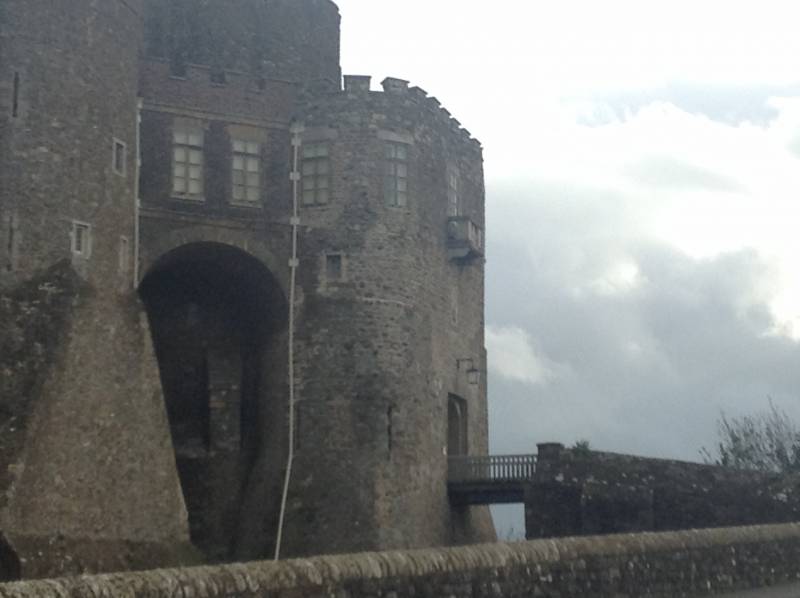
And we're getting really close...
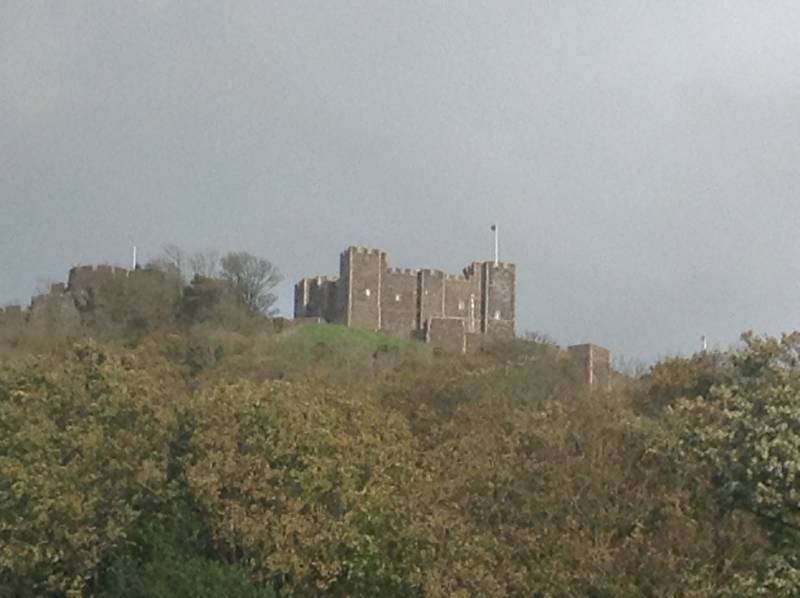
And now again we look at the castle from afar. “Autumn has come, the fields and forests have turned yellow ...”
The Builder King, nicknamed "Short Cloak"
For 100 years, everything seems to have somehow calmed down. None of the chronicles said anything about Dover Castle until Henry II Plantagenet, who received the strange nickname "Short Cloak", ascended the English throne. Heinrich was very restless, he didn’t like to sit on the throne just like that, but preferred to travel around those lands of England that he considered his own and build castles there. And he succeeded in this occupation (you might think that he either participated in the competition “who will build more”, or simply collected them), as he managed to build about 90 castle fortifications!
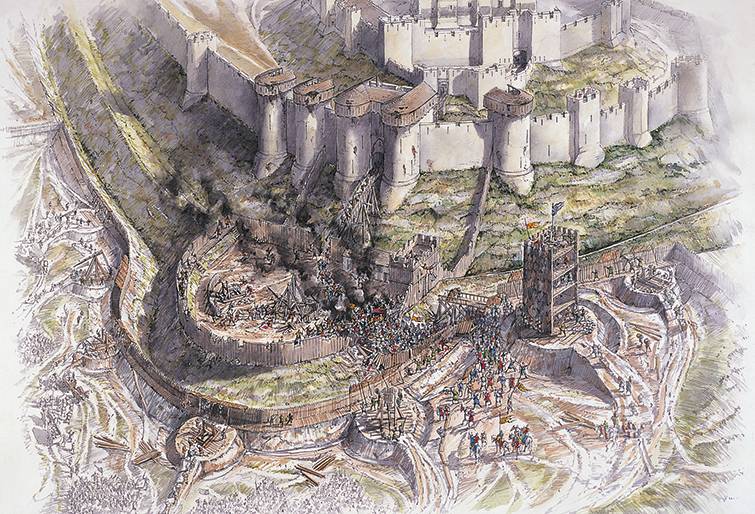
Reconstruction of the siege of Dover by the French. By Peter Dunn ®Historic England
His favorite building, in which this king invested the most money, was Dover Castle. Until his death, Henry II "played at the castle" - he built everything and rebuilt it, but in the end he did not finish the construction. Another king, John the Landless, had to bring it to mind. John completed a lot of things - walls, new towers - and completed the work just in time. The fact is that in 1216 a rebellion began in England, followed by a foreign invasion - the French landed in the country and took many fortresses. But Windsor and Dover could not be taken.
Why was it so difficult to storm medieval castles?
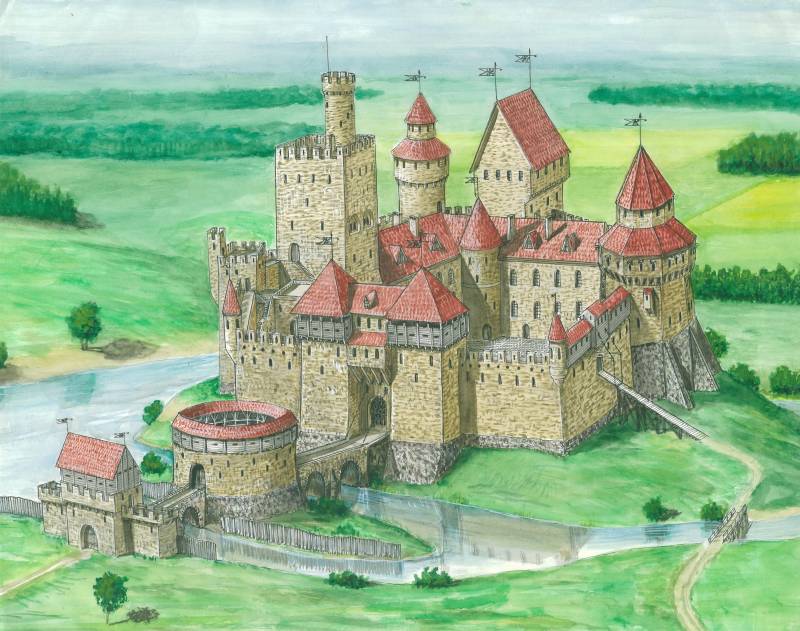
Let's look at a drawing by a modern artist, in which he depicted a typical knight's castle of the XNUMXth-XNUMXth centuries, moreover, owned by a very rich lord, and possibly even by the king himself. Rice. A. Sheps
Everything in it is drawn as it should, down to the smallest detail. On the left is a bridgehead fortification, behind which is a bridge leading to the second fortification - a round barbican tower. The barbican was “crowned”, that is, on the eve of hostilities, a wooden superstructure with loopholes was installed on it, covered with a tiled roof on top. Another stone bridge leads from the barbican to the castle, possibly with a secret exit directly to the water, along with a drawbridge in front of the gate. A balcony hangs over the gate with machicols - loopholes directed downwards, through which stones were thrown from above and boiling water was poured. So that's how easily the enemies would not have been able to approach the gate! Two towers on a strong foundation protect the gates on the right and left, and the crossbowmen sitting on them could, while remaining "invisible", shoot through both the barbican and the bridgehead. As you can see, wooden combat galleries have already been mounted on the towers, but on the walls to the left and right of the towers they are not yet there, but in them, just above the loopholes in the walls, holes for fastening wooden beams protruding from the wall are clearly visible. There are already galleries on the wall that goes to the right, and here we see a collapsible bridge, along which food for people and horses was brought to the castle in peacetime. The war began - and he was immediately removed. A little further - a mighty ten-sided corner tower with hinged stone galleries, machicolations and ... a small wall-mounted toilet cubicle. The walls of the tower are supported by powerful buttresses. Only God knows how deep they go into the ground, so digging under this corner tower is a dead business. Next - the premises in which the owner of the castle lives with his family. The donjon is the highest tower of the castle, apparently built a long time ago, it is also built on with a watchtower, from where the guards can see far around ... And - let's think, is it really so easy to take this castle? From the side of the river, digging is impossible due to groundwater. Where it is drier, the towers, and most likely the foundations of the walls, are buried so deep that it is impossible to get to the bottom of them. Well, the garrison of the castle. He doesn't sleep either!
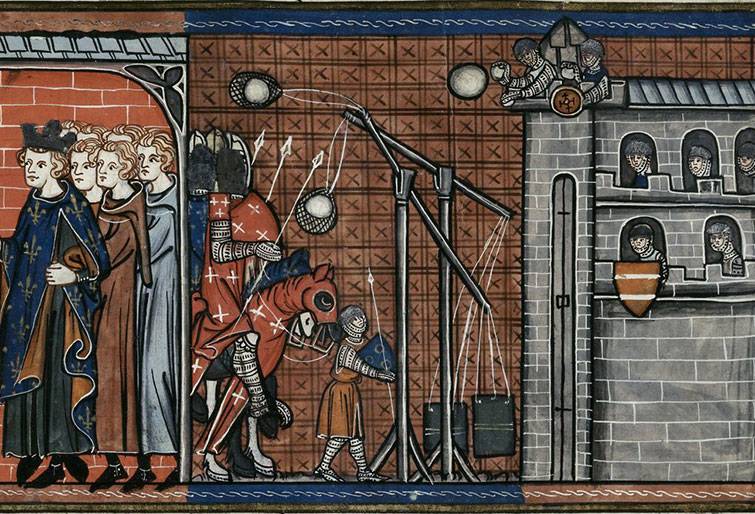
Storming of Kenilworth Castle. Miniature from a medieval manuscript. That's how the besiegers "bombed" the castles then!
Impregnable fortress
As a result, Dover was simply too tough for the French. What they didn’t do: they dug tunnels, they undermined and blew up the towers, they tried to break through the walls, but its defenders held on tight. And after sitting at its walls for three months, they, annoyed, left. In 1217, the French again besieged Dover Castle, but this time without success. As a result, they went home, and Henry III, who appreciated the usefulness of the castle, not only restored everything that was destroyed, but also strengthened it even more. So, on the western side, a new gate was built, protected by six towers at once. The unusually high new tower of St. John's was built in order to view not only the fortifications, but also all the surroundings of the castle for many miles in all directions, and even look at the sea in the distance. Warehouses for grain and even a windmill were built to grind flour and bake bread for the garrison. And the king increased the number of garrison in the castle, ordering to protect almost the entire coast of England in the Canal zone.
A lot of money was allocated from the royal treasury for this. Well, yes, and the goal was good - the security of the country from invasion from the sea!
Trouble from their own!
As it often happened in the old days, the castle successfully fought against external enemies, but could not defend itself from its own, “internal” ones. When in 1642 the era of civil war began in England, the city of Dover was occupied by supporters of parliament, and the castle was occupied by supporters of the king. But they did not triumph in it for long: the townspeople, who knew all the entrances and exits from it, made their way inside, and the royalists who defended it had only to surrender.
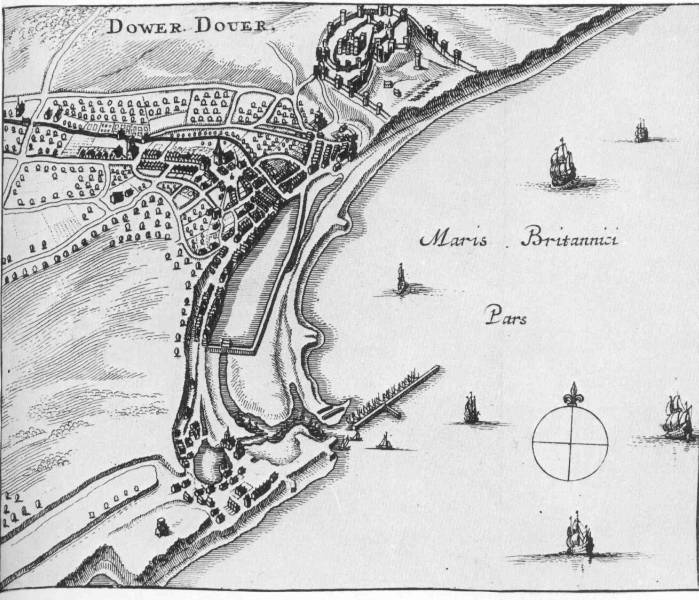
City of Dover and castle on a 1661 plan
In the XNUMXth century, the castle was re-equipped with new cannons, new infantry barracks were built in it, and then, when there was no more free space left on the surface, they began to build barracks and warehouses deep underground. So by the time England took it into her head to threaten Napoleon, Dover Castle was most reliably protected both from the sea and from land - and was a truly impregnable fortress.
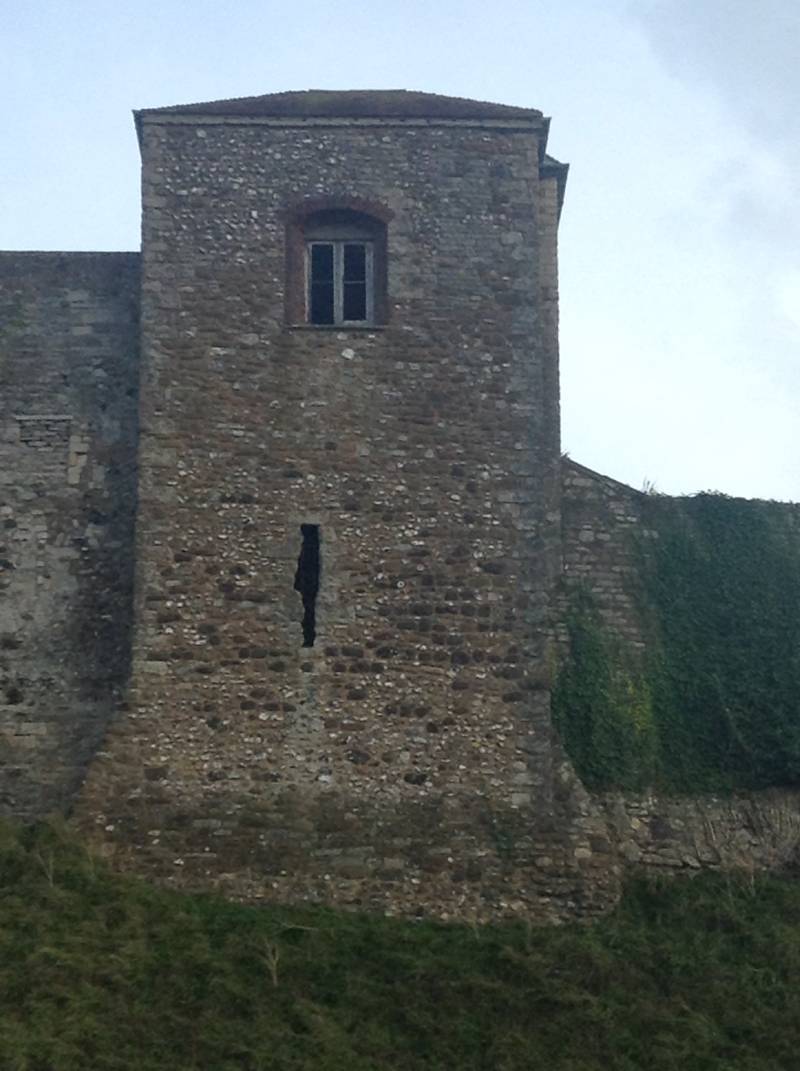
One of their corner towers with a loophole at the bottom
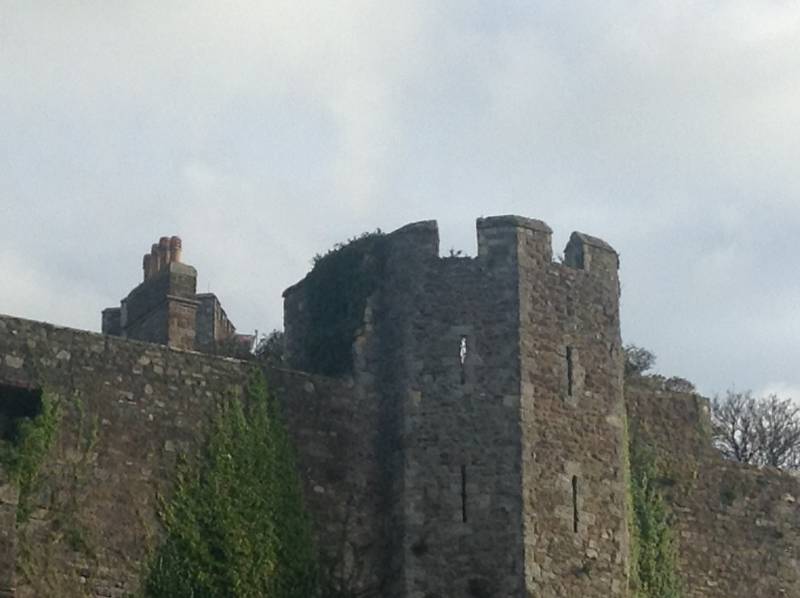
Hexagonal tower covered with ivy. View in the spirit of romanticism. Wild and poetic. “The ruins of dilapidated stone buildings, and wild branches braided all the towers ...”
What does a medieval castle smell like?
During the First World War, anti-aircraft batteries and powerful searchlights were located in the castle. By the beginning of World War II, Dover Castle gained “foreseeing” - the latest radars were placed on its towers, and in the underground tunnels, which were further expanded and further strengthened, there was a hospital and the headquarters of the command of all anti-aircraft and coastal artillery on the southwest coast of England.
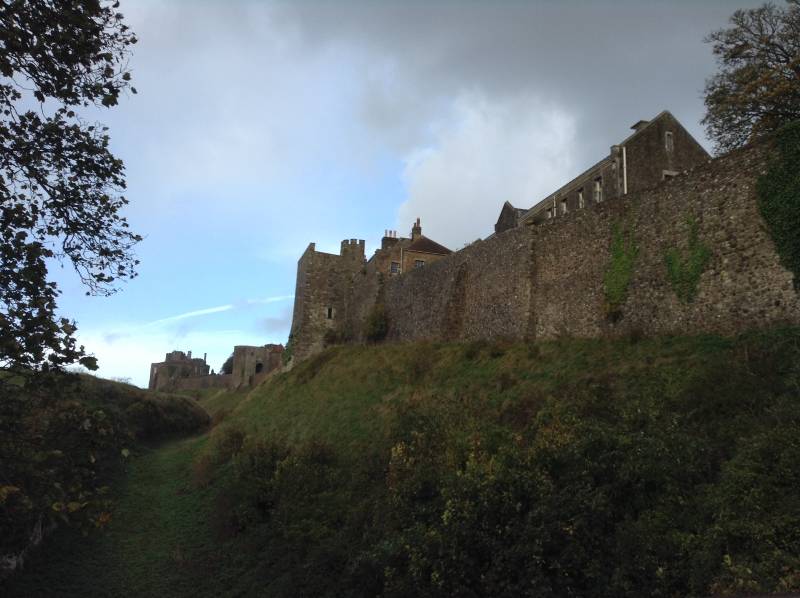
We go down into the ditch. It is ancient, but the trace of a jet plane in the sky is already ours today
It served as headquarters and military base until May 1945. In 1958, some part of its garrison was disbanded, but it did not lose its military significance: due to the Caribbean crisis that happened four years later, the tunnels of Dover Castle began to be considered as a bomb shelter in case of a nuclear war. Everything related to the internal structure of the castle was immediately classified. And the secrecy regime was removed only in 1984, when it was turned into a museum.
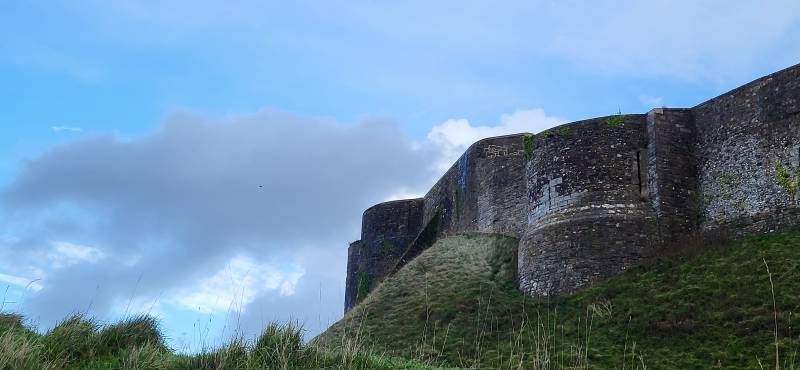
Just look at the bastions there. It's not medieval anymore. It was these stone structures that were the support for the “royal cannons” - guns of special power that hit for as many as four miles.
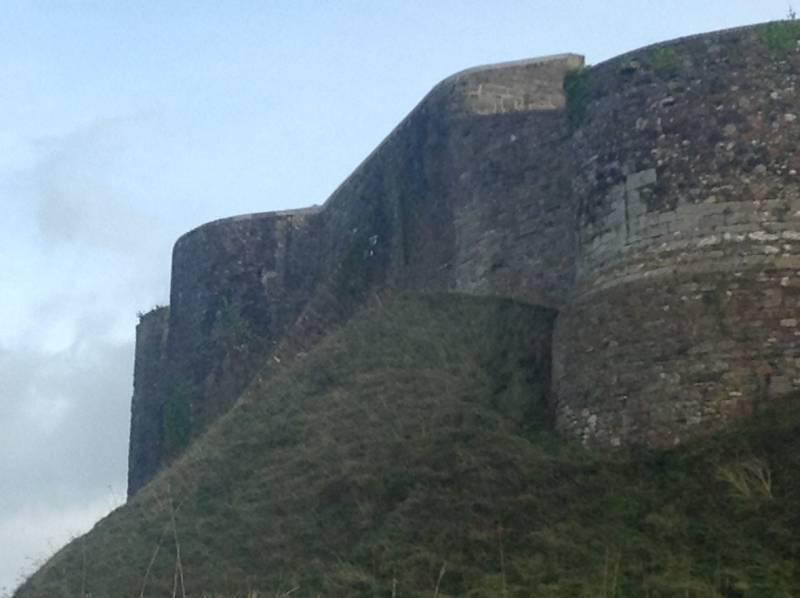
This photo clearly shows the thickness of the parapet.
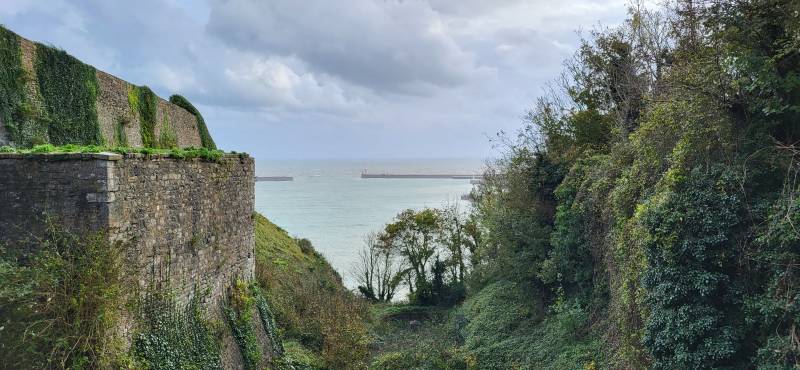
But in this photo, the moat of the castle overlooks the sea. Another very wild, but pretty place... Look, there is a line of French warships clearly visible in the distance. A little more and the battle of the fortress with fleet will begin!
Moreover, the museum of the original British came out very unusual. The rooms at the top are decorated under the Middle Ages, but the underground shelters are in the spirit of the Second World War. Going underground into the tunnels made in the thickness of the chalk rocks, you can hear the roar of diving German bombers, the groans of the wounded who were in the hospital, and even smell the smell of antiseptics and strong soldier's tobacco. Previously, to enhance the effect, the smell of blood was also added to all these “military aromas”. But since some visitors could not withstand such a maximum immersion in the past and fainted, they decided to remove the smell of blood.
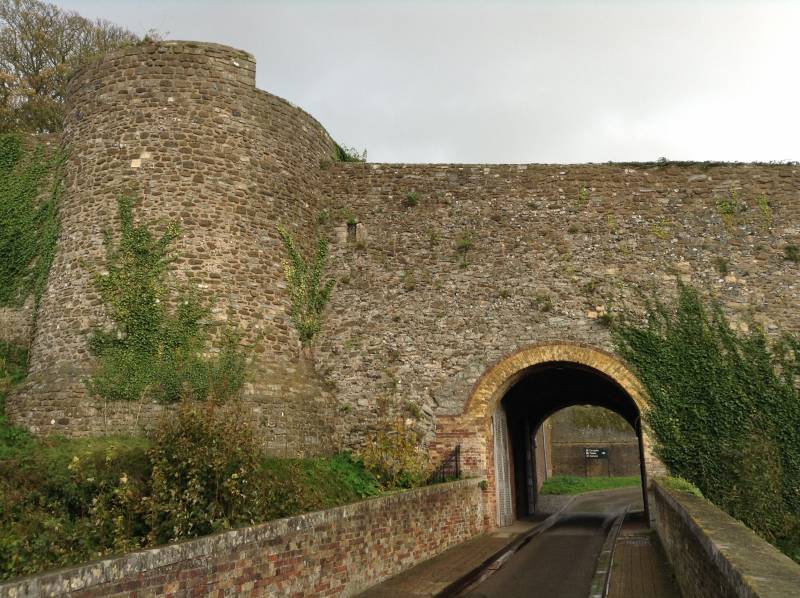
Just a gate. Alone among several ... And above them is a wall
PS The author and administration of the site express their most sincere gratitude to our reader Alexei Sviridov ("Bolt Cutter") for the photographs of Dover Castle taken by him.
Information